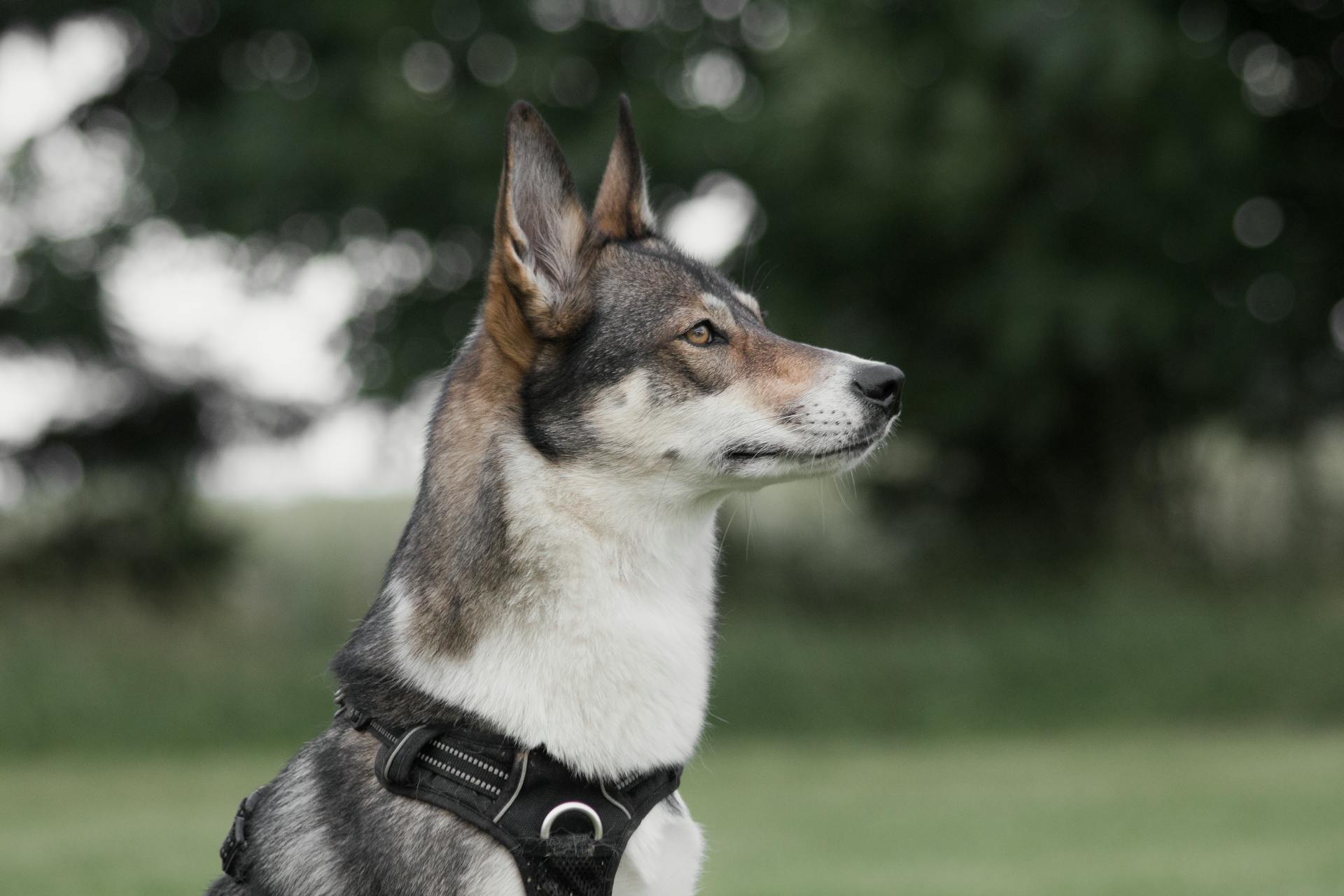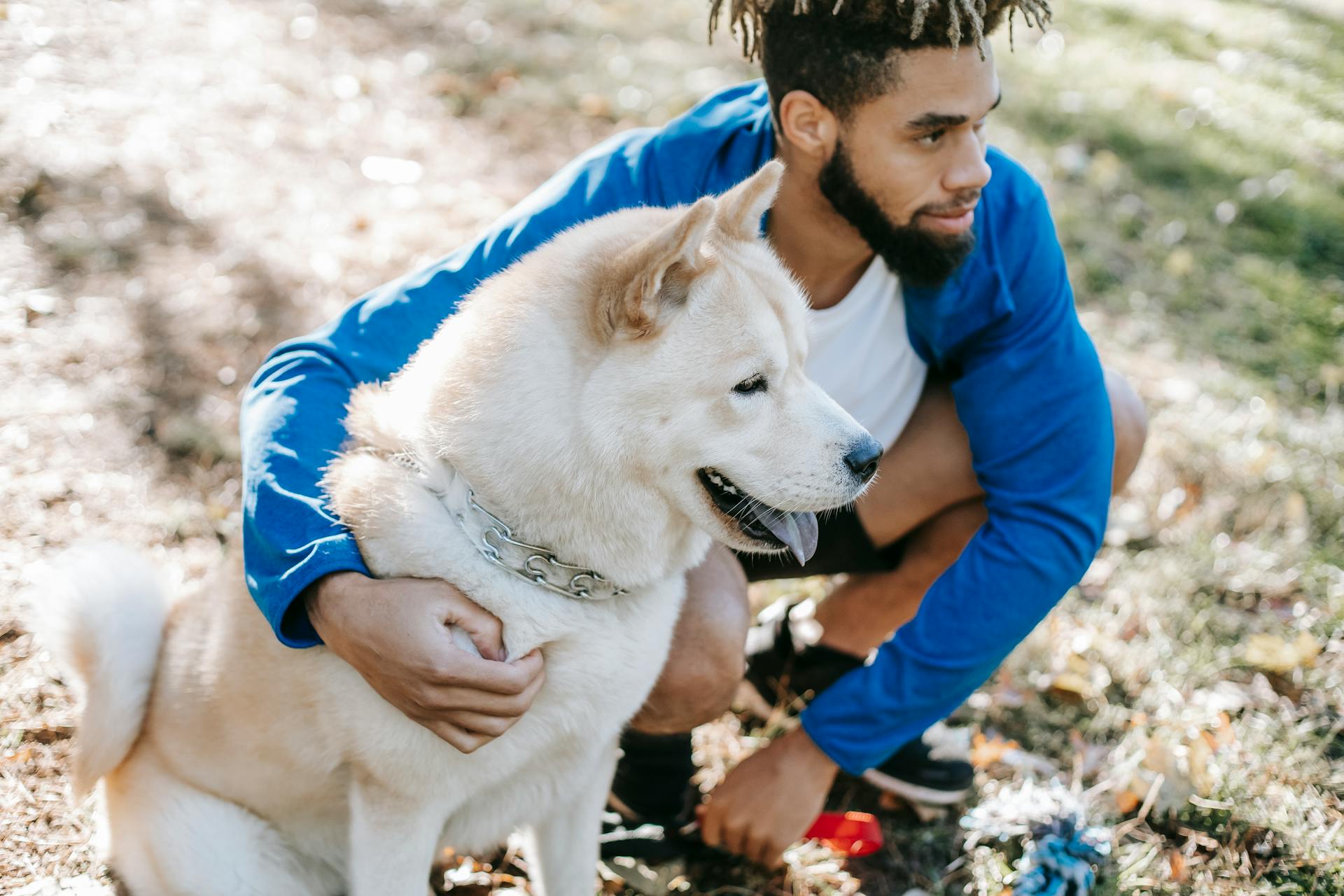
Laika's historic flight was a Soviet space program achievement. Launched on November 3, 1957, Laika became the first living creature to orbit the Earth.
Laika was a stray dog from Moscow, weighing around 11 pounds. She was chosen for the Sputnik 2 mission due to her small size and calm temperament.
Laika's spaceflight lasted about five hours, during which she reached a maximum altitude of 1,570 kilometers.
Laika's Mission
Laika's mission was a historic one, launching just a month after Sputnik 1, to coincide with the anniversary of the Bolshevik revolution. The spacecraft was much larger and more elaborate, measuring 13 feet tall and 6.5 feet wide, and weighing 1,120 pounds.
Laika's cabin was equipped with a video camera, an air regeneration system, and padding to keep her comfortable. She had access to food and water in a gelatinized form.
The early telemetry indicated that Laika was agitated but eating her food. The spacecraft carried scientific instruments to measure solar radiation and cosmic rays.
Laika's mission was a suicide mission, as the satellite was not designed to come safely back to Earth. The Soviet space program didn't want to delay the launch.
Laika survived the launch and initially seemed to be doing well, but the telemetry data later revealed that she died when the cabin overheated. The thermal control system didn't work properly, and some insulation tore off due to an anomaly during the launch.
Sputnik 2's batteries died on November 10, 1957, and the spacecraft stopped beaming data home. With all systems dead, the spacecraft continued circling the Earth until April 14, 1958, when it re-entered the atmosphere after 2,570 orbits.
Suggestion: What Can You Feed Dogs Other than Dog Food
Background and Preparation
Laika was selected as the "flight dog" for the one-way mission to space, with Albina as her backup and Mushka staying on the ground for testing purposes.
Yazdovsky and Gazenko conducted surgery on the dogs to route cables from transmitters to sensors measuring breathing, pulse, and blood pressure.
The dogs were first flown to Tashkent aboard a Tu-104 plane, then to Turatam in a smaller Il-14 plane.
Who Was Laika?
Laika was a black-and-white mutt originally named Kudrayavka, or Little Curly. She weighed about 13 pounds (6 kilograms) at the time of her flight, according to NASA.
Laika's name, which means Barker, came about when she barked during a radio interview. In the U.S. press, she was sometimes called Muttnik.
Laika was a stray dog from the streets of Moscow, where she was originally found. Soviet rocket scientists collected stray dogs, who they thought would be suitable subjects for their spaceflight research.
The researchers selected the most obedient and those most tolerant of loud noises and air pressure changes. They also subjected final candidates to test runs in small capsules — some lasting for weeks, according to Smithsonian Magazine.
Laika's back-up was named Albina (White), who had recently had puppies.
Preflight Preparations
Laika was chosen to be the primary flight dog, while Albina was her backup and Mushka was a control dog to stay on the ground for testing.

Before the mission, the dogs underwent surgery to route cables from transmitters to sensors measuring their breathing, pulse, and blood pressure.
Training continued even after arrival at the launch site, with the dogs getting familiar with the feeding system and being placed in the capsules one after another.
Laika's fur was sponged in a weak ethanol solution and carefully groomed before liftoff, while iodine was painted onto the areas where sensors would be placed to monitor her bodily functions.
The temperatures at the launch site were extremely low, so a hose connected to a heater was used to keep Laika's container warm.
Two assistants were assigned to keep a constant watch on Laika before launch, and just prior to liftoff, the technicians kissed her nose and wished her bon voyage, knowing she wouldn't survive the flight.
Voyage
Laika's respiration increased to between three and four times the pre-launch rate during peak acceleration.
Her heart rate was 103 beats/min before launch and skyrocketed to 240 beats/min during the early acceleration.
Laika's pulse rate had settled back to 102 beats/min after three hours of weightlessness, indicating the stress she was under.
The Soviet scientists had planned to euthanise Laika with a serving of poisoned food if she survived the flight.
Laika's cabin temperature rose to 40 °C (104 °F) after some of the thermal insulation tore loose.
The early telemetry indicated that Laika was agitated but eating her food, but no further signs of life were received from the spacecraft after five to seven hours into the flight.
Laika's remains, along with the Sputnik2 spacecraft, disintegrated during re-entry on 14 April 1958, after 2,570 orbits.
Legacy
Laika's legacy is a testament to her significance in the history of space exploration. She is memorialized in a statue and plaque at Star City, the Russian Cosmonaut training facility.
In addition to the statue, Laika has a dedicated monument at the military research facility where she was prepared for her flight. It was unveiled on April 11, 2008.
Discover more: Laika Dog Statue
Laika's image has also been featured on stamps and envelopes, as well as on branded cigarettes and matches. This shows how much she was celebrated and remembered by the Soviet Union.
However, not all dogs that followed Laika's mission were as fortunate. Four dogs died in subsequent Soviet space missions, including Bars and Lisichka, who perished in a rocket explosion in 1960.
Take a look at this: Soviet Space Dogs
Space Exploration History
Space exploration has a rich history, with many milestones achieved over the years. One of the earliest attempts at space exploration was the Soviet Union's launch of Sputnik 1, which marked the beginning of the space age.
The Soviet Union continued to push the boundaries of space exploration, with the successful launch of Sputnik 2 in 1957. Laika, the first dog in space, was aboard this mission.
Laika's flight was a significant achievement in space exploration, paving the way for future human spaceflight.
Broaden your view: Soviet Union Space Dog
Cold War Space Race
The Cold War Space Race was a pivotal moment in space exploration history. It was a time of intense competition between the Soviet Union and the United States, with each side trying to outdo the other in spaceflight achievements.
Sputnik 2's launch in 1957 was one of three spaceflight events that shook the United States, causing widespread concern about its technological capabilities compared to those of its Cold War rival. This event was a wake-up call for the US space program.
The United States bounced back with the successful launch of the Explorer 1 satellite on January 31, 1958. This was a major milestone in the space race.
The Soviet Union notched the milestone of the first person to reach space on April 12, 1961, launching cosmonaut Yuri Gagarin on an orbital mission. This achievement marked a significant step forward in space exploration.
The launch of Sputnik 2 was a catalyst for the US space program, with Robert Gilruth, the first director of what is now NASA's Johnson Space Center, saying, "When I saw the dog go up, I said, 'My God, we better get going because it's going to be a legitimate program to put man in space.'"
For your interest: Two Dog Names
Suborbital Flights
In the early 1950s, the Soviet Space Dogs underwent rigorous training to prepare for their space missions.
They were trained to stand for long stretches of time, wear space suits, and get used to being inside small space modules.
To simulate the experience of launch, they were placed in launch simulators and rode in centrifuges that mimicked the acceleration speeds of a rocket launch.
On August 15, 1951, Dezik and Tsygan became the first Soviet Space Dogs to make a suborbital flight.
They traveled to a maximum altitude of 110 km.
Following their successful flight, Soviet scientists continued to send dogs into space, enlisting over 20 dogs in their space exploration program.
Some dogs had successful trips and returned safely, while others didn’t survive their flights.
1960s-1970s: Successors
The Soviet Union continued to send dogs into space after Laika's voyage. They were determined to learn more about space travel and its effects on living organisms.
Belka and Strelka were the first Soviet space dogs to survive an orbital flight. Their spacecraft, Korabl-Sputnik 2, was launched on August 19, 1960.
The spacecraft included a rabbit, 2 rats, 42 mice, and a variety of plants and fungi. This was a significant step in space exploration, demonstrating the feasibility of sending multiple living organisms into space.
Belka and Strelka spent a day in orbit before safely returning to Earth.
Curious to learn more? Check out: Strelka Space Dog
Animal Testing Ethics
The ethics of animal testing were a major concern in the case of Laika, the first dog in space. Laika's health and retrieval were initially overshadowed by the Soviet-U.S. Space Race, but as more details emerged, the public began to question the mistreatment of animals in the name of science.
In 1957, newspaper clippings show that the press was focused on the political perspective, while Laika's fate only became a concern later. The Sputnik 2 mission sparked a global debate on animal testing, with the National Canine Defence League in the UK calling for a minute's silence in Laika's honor.
Animal rights groups at the time called for protests at Soviet embassies, and some groups even demonstrated outside the United Nations in New York. Laboratory researchers in the U.S. offered some support for the Soviets, but not everyone was convinced.
One scientist, Oleg Gazenko, later expressed regret for allowing Laika to die, saying that working with animals is a source of suffering and that they should be treated with more respect. This regret came decades after the fact, but it highlights the complexities of animal testing and the ethics involved.
Laika's story turned bittersweet as more details were revealed over the years, and her journey became a tragic tale of the mistreatment of space dogs.
Frequently Asked Questions
Was Laika scared when she died?
Laika was terrified before her death. Her distress was likely due to the cramped and overheated conditions of the Sputnik 2 spacecraft.
Did they find Laika's body?
Laika's remains were not recovered, but her space capsule disintegrated upon re-entry to Earth. Unfortunately, Laika's body was not found.
Featured Images: pexels.com


